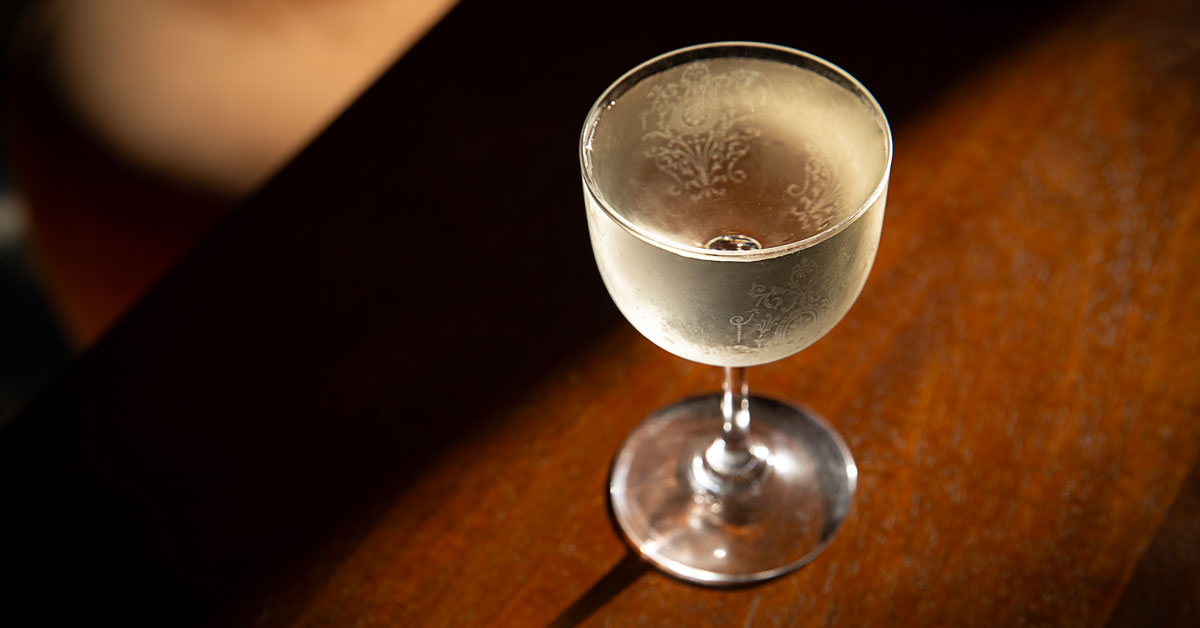
Every day at Whoopsie’s in Atlanta, the bartender on duty makes a selection from the annals of cocktail history to serve as the drink of the day. Each featured recipe is then recorded in a big Moleskine book, into which co-owner Tim Faulkner has been entering drinks for 15 years. The book serves as both an archive of the recipes and an easy way for any Whoopsie’s bartender to recreate a previously featured drink for customers who come in asking for one.
Last year, bartender Jakob McCabe-Johnston selected the Mickey Finn as the drink of the day. The 1940s cocktail, which combines gin, dry vermouth, absinthe and crème de menthe, first appeared in Crosby Gaige’s Cocktail Guide and Ladies’ Companion (wherein the drink’s name is spelled “Micky Finn”); McCabe-Johnston found it in a 1970s cocktail compendium called Complete World Bartender Guide.
The drink is named after the turn-of-the-century proprietor of the Lone Star Saloon in Chicago, who was known to put incapacitating agents into his customers’ drinks so that he could rob them. That move came to be known as “slipping someone a Mickey.” Happily, drinking a Mickey Finn at Whoopsie’s is a far more pleasant experience. Faulkner is quick to sing the cocktail’s praises: “It’s not as sharp or stingy as you would think with the botanicals in the gin and the absinthe,” he says. “It’s got an almost milky mouthfeel.”
Though the original recipe calls for equal parts gin, dry vermouth and absinthe, with just a touch of crème de menthe, the spec at Whoopsie’s follows one of the bar’s favorite ratios, 3:1:1:1, with the gin in the lead spot. This turns the cocktail into something of an improved Martini, wherein the expected gin and vermouth are joined by flavorful herbaceous modifiers.
For the gin, Faulkner favors Plymouth Navy Strength—which he affectionately calls the “quintessential chimney sweep gin”—in large part because the 114-proof expression can stand up to the drink’s other elements. Faulkner believes that the job of vermouth, meanwhile, is as a lengthener. “Vermouth is the grits of the bottle world,” says the Southerner. “It’s a carrier for other flavors.” He finds that Dolin does this effectively.
In what is perhaps the greatest connection to the drink’s eponymous inspiration, the absinthe provides an element of perceived danger that Faulkner likes to play up. “It’s the intoxicating element that’s supposed to knock you out,” he says. In another reflection of the pared-down, classics-focused program at Whoopsie’s, Faulkner reaches for what he sees as the classical expression of absinthe—Pernod Absinthe Supérieure—where fennel and anise dominate.
There’s a through line from the absinthe to the crème de menthe used at Whoopsie’s, Giffard Menthe-Pastille. The latter French product, which has just a touch of anise along with big peppermint and spearmint flavors, amps up the herbal quality of the Mickey Finn and strikes the perfect balance between adding a pleasing weight to the drink while also not being a “sugar bomb.”
Though hard to categorize, the Mickey Finn is a spirit-forward drink that pleasantly surprises customers whenever Whoopsie’s bartenders pull it out of their back pocket. Faulkner loves the flavor profile, but points to the drink’s texture as its chief attribute. “It’s silky as hell,” says Faulkner. “It tastes like a pearl.”







